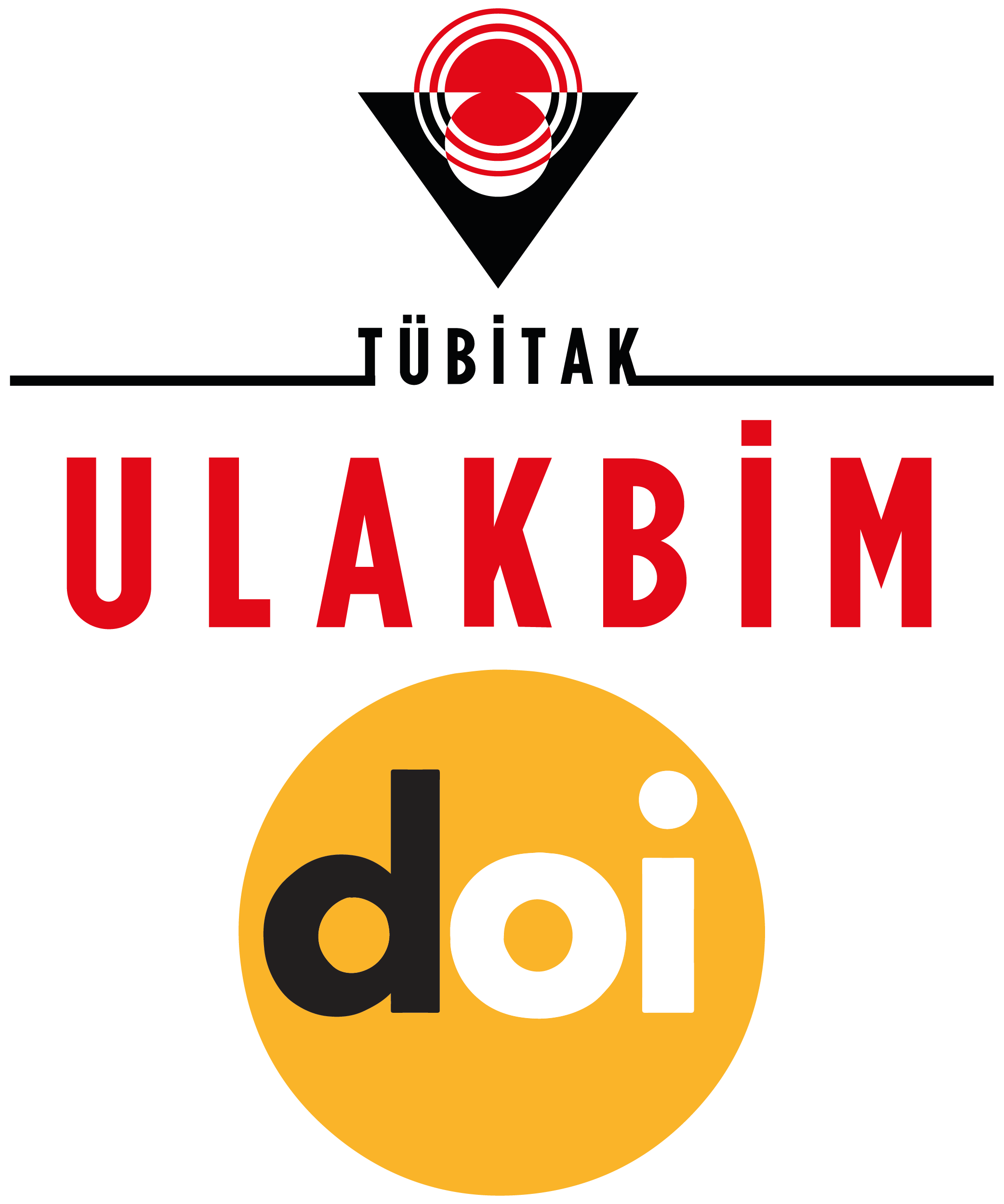The Impact of Tourist Lifestyles on Local Food Consumption: A Case Study of Foreign Visitors in Turkey
DOI:
https://doi.org/10.21325/jotags.2024.1530Keywords:
Lifestyles, astronomy Tourism, Local FoodAbstract
Since the sector of tourism grows in prominence, more individuals are choosing vacations to get away from their regular lives and find pleasure. Local food is a vital part of it, acting as an essential part of tourist incentives. Recognizing the factors that influence tourists' choices for eating local produce is crucial. This research study seeks to answer this question by examining the influence of socio-demographic characteristics on tourists intention eating local foods (TLFCV) using a widely known paradigm in consumer behavior – The Values and Lifestyles model (VALS). The study aims to describe the mental and social constructs that lie behind visitors' interest in and participation in local food encounters, using this approach. In order to achieve this goal, a questionnaire was given to foreign visitors to Istanbul. As travelers prepared to return home from their vacations, information was collected using well-organized surveys distributed at Istanbul Airport's International Departures Station. There were 500 legitimate responses to the surveys which was offered in seven distinct languages and had individuals from ten nations.
References
Ağırlar, S. (1999). Determining Consumer Profiling in Terms of Life Style Characteristics: An Application on Automobil Oluners. Unpublished Master Dissertation. Sakarya University, Sakarya.
Albayrak, A. (2013). A study of determining foreign toursists opinion about Turish cuisine. Journal of Yasar University, 30 (8), 5049-5063.
Alphan, E. (2017). A study on factors affecting local food consumption in tourism destinations. Unpublished Master Dissertation. Gazi University, Ankara.
Armutlulu, I. H. & Bati, G. B. (2014). Model selection considering scales in social sciences: An application on entrepreneurship tendency. Research Journal of Business and Management, 1 (4), 337-352.
Arnould, E., Price L. & Zinkhan, G. (2004). Consumers. (Second Edition). Boston: Mc Graw- Hill/Irwin.
Assael, H. (1992). Consumer Behavior and Marketing Action. Indiana: PWS-KENT Publication.
Astor, L. P. L. (2006). Lifestyles and the adoption of 3G services in Hong Kong. Graduation Project. Hong Kong: The Chinese University of Hong Kong School of Journalism & Communication.
Aydın, M. (2020). The effect of attitudes towards the environment and lifestyle on destination attachment: The sample of Olympos. Unpublished Master Dissertation. Selçuk University, Konya.
Bakhtadze, E. (2018). Georgian consumers’ behavior in tourism and market segmentation vals system. Globalization and Business, 5, 242-245.
Bayındır, B. & Yüncü, H. R. (2020). Investigating the effect of lifestyle on the intention to choose coffee shop. Journal of Turkish Tourism Research, 4 (4), 3137-3151.
Bekar, A. & Gövce, A. M. (2015). The relationship between food purchase behaviour and life styles of consumers. The Journal of International Social Research, 8 (36), 946-957.
Björk, P. & Kauppinen-Räisänen, H. (2016). Local food: A source for destination attraction. International Journal of Contemporary Hospitality Management, 28 (1), 177-194.
Brown, T. A. (2006). Confirmatory Factor Analysis for Applied Research. New York: The Guilford Press.
Bruwer, J., Li, E. & Reid, M. (2002). Segmentation of the Australian wine market using a wine-related lifestyle approach. Journal of Wine Research, 13 (3), 217-242.
Byrne, B. M. (2010). Structural Equation Modeling with AMOS: Basic Concepts, Applications and Programming. (2nd Edition). New York: Routledge Taylor and Francis Group. Tabanchnic
Büyüköztürk, Ş., Çakmak, E. K., Akgün, Ö. E., Karadeniz, Ş., & Demirel, F. (2017). Bilimsel Araştırma Yöntemleri. Ankara: Pegem Akademi.
Chang, W. (2011). A taste of tourism: Visitors' motivations to attend a food festival. Event Management, 15 (2), 151-161.
Choe, J. Y. J. & Kim, S. S. (2019). Development and validation of a multidimensional tourist’s local food consumption value (TLFCV) scale. International Journal of Hospitality Management, 77, 245-259.
Coşkun, R., Altunışık, R. & Yıldırım, E. (2017). Sosyal Bilimlerde Araştırma Yöntemleri SPSS Uygulamalı. (9th Edition). Sakarya: Sakarya Yayıncılık.
Cömert, M. (2014). The importance of regional cuisine in tourism marketing with a case study: Hatay cuisine. Journal of Tourism and Gastronomy Studies, 2 (1), 64-70.
Dağdeviren, A. (2015). Yerel Halkın Turizmin Sosyo-Kültürel Etkilerini Algılamalarının Yaşam Tarzı Boyutuyla Incelenmesi. Yayımlanmamış Doktora Tezi. Ankara: Gazi Üniversitesi, Sosyal Bilimler Enstitüsü.
Demby, E. H. (1994). Psychographics revisited: The birth of a technique. Marketing Research, 6 (2), 26-29.
Erciş, A., Ünal, S. & Can, P. (2008). A research to distinguish consumers subgroups in terms of lifestyle and white goods purchasing process. Gazi Üniversitesi Endüstriyel Sanatlar Eğitim Fakültesi Dergisi, (22), 35-48.
Fields, K. (2002). Demand for the gastronomy tourism product: Motivational factors. Hjalager, A. ve Richards, G. (Eds.), Tourism and Gastronomy in (37-50). London: Routledge.
Foxall, G. & Goldsmith, R. (1997). Consumer Psychology for Marketing. New York: International Thomson Business Press.
Frochot, I. (2003). An analysis of regional positioning and its associated food images in French tourism regional brochures. Journal of Travel & Tourism Marketing, 14 (3-4), 77-96.
Girgin, G. K. (2018). Measurement of tourist motivations for local foods consumption: An application in Antalya. Atatürk Üniversitesi Sosyal Bilimler Enstitüsü Dergisi, 22 (Special Issue), 793-810.
Giritlioğlu, İ. & İpar, M. S. (2016). Gastronomi turizmi kapsamında Gaziantep mutfağı üzerine bir inceleme. 2. Uluslararası Çin’den Adriyatik’e Sosyal Bilimler Kongresi, Hatay.
Gürbüz, S. (2019). AMOS ile Yapısal Eşitlik Modellemesi Temel Ilkeler ve Uygulamalı Analizler (IBM AMOS Uygulamalı, Örnek Veri Setleri). Ankara: Seçkin Yayıncılık.
Hair, J. F., Black, W. C., Babin, B. J. & Anderson, R. E. (2014). Multivariate Data Analysis: Global Perspective. Pearson Education. New Jersey: Prentice Hall.
Haşimoğlu, A. B. (2013). An application on determining the life-style of consumers who consume fast-food products. International Journal of Economic and Administrative Studies, 11 (6), 17-34.
Henderson, J. C. (2009). Food tourism reviewed. British Food Journal, 111 (4), 317- 326.
Hesterman, O.B. & Horan, D. (2017). The Demand for ‘local’ Food Is Growing Here’s Why Investors Should Pay Attention. https://www.businessinsider.com/the-demand-for-local-food-is-growing-2017-4 (Erişim Tarihi: 06.08.2022).
Inwood, S. M., Sharp, J. S., Moore, R. H. & Stinner, D. H. (2009). Restaurants, chefs and local foods: Insights drawn from application of a diffusion of innovation framework. Agriculture and Human Values, 26 (3), 177-191.
Ivanova, L., Terziyska, I. & Trifonova, J. (2014). Characteristics of traditional food the viewpoint of the tourism business. Service Management, 3(14), 123 130.
İstanbul Directorate of Culture and Tourism (2020). İstanbul Turizm İstatistikleri Raporu 2020 https://istanbul.ktb.gov.tr/Eklenti/80449,aralik-2020-istanbul-turizm-istatistikleripdf.pdf?0, (Erişim Tarihi: 30.09.2022).
Kesic, T. & Piri-Rajh, S. (2003). Market segmentation on the basis of food-related lifestyles of Croatian families. British Food Journal, 105 (3), 162-174.
Kesici, M. (2012). The role of traditional food and beverage culture concerning to demand of rural tourism. KMU Journal of Social and Economic Research, 14 (23), 33-37.
Khan, M. (2006). Consumer Behavior and Advertising Management. New Delhi: New Age International Ltd., Publishers.
Kılınç, U. (2019). Complaint management in hotels: A model suggestion for nonverbal communication between customers and employees. Tourism Academic Journal, 6 (1), 189-204.
Kim, Y.G., Eves, A. & Scarles, C. (2009). Building a model of local food consumption on trips and holidays: A grounded theory approach. International Journal of Hospitality Management, 28 (3), 423-431.
Kim, H.K., Lee, T. J. & Yoon, S.H. (2012). Factors affecting consumer‘s choice of ethnic restaurants. Tourism Analysis, 17 (3), 377–383.
Kim, Y. G., Eves, A. & Scarles, C. (2013). Empirical verification of a conceptual model of local food consumption at a tourist destination. International Journal of Hospitality Management, (33), 484-489.
Kittler, P. G. & Sucher, K. P. (2008). Food and Culture. Thomson Wadsworth.
Kline, R. B. (2011). Principles and Practice of Structural Equation Modeling. (Third Edition). New York: The Gouilford Press.
Koban, E. (2020). Gastronomik Turizm: Pazarlama ve Rekabet Yaklaşımıyla. Bursa: Ekin Basın Yayın Dağıtım.
Koç, E. (2007). Tüketici Davranışı ve Pazarlama Stratejileri: Global ve Yerel Yaklaşım. (1st Edition). Ankara: Seçkin Yayıncılık.
Koç, E. (2013). Tüketici Davranışları ve Pazarlama Stratejileri: Global ve Yerel Yaklaşım. Ankara: Seçkin Yayıncılık.
Kotler, P. & Keller, K.L. (2006). Marketing Management. New Jersey: Prentice Hall.
Kozak, M. (2018). Bilimsel Araştırma: Tasarım, Yazım ve Yayım Teknikleri. (4th Edition). Ankara: Detay Yayıncılık.
Lin, F. Y. (2003). An Analysis of Hospitality Consumer Lifestyles in The United States. Unpublished Doctoral Dissertation. Texas: Graduate Faculty of Texas Tech University.
Mak, A. H. N., Lumbers, M., Eves, A. & Chang, R. C. Y. (2017). The effects of food-related personality traits on tourist food consumption motivations. Asia Pacific Journal of Tourism Research, 22 (1), 1-20.
Martinez, S., Hand, M., Da Pra, M., Pollack, S., Ralston, K., Smith, T. & Newman, C. (2010). Local food systems: Concepts, impacts, and issues, ERR 97. US Department of Agriculture, Economic Research Service, 5.
Montenari, M. (2006). Food is Culture. Colombia: Colombia Business School Publishing.
Morris, C. & Buller, H. (2003). The local food sector: A preliminary assessment of its form and impact in Gloucestershire. British Food Journal, 105, 559- 566.
Myrland. E., Trondsen, T., Johnston, R.S. & Lund, L. (2000). Determinants of seafood consumption in Norway: Lifestyle, revealed preferences, and barriers to consumption. Food Quality and Preference, 11 (3), 169- 188.
Nummedal, M. & Hall, C.M. (2006). Local food in tourism: An investigation of the New Zealand south island’s bed and breakfast sector’s use and perception of local food. Tourism Review International, 9 (4): 365-378.
Pearce, P. L. (2005). Tourist Behaviour: Themes and Conceptual Schemes. Clevedon: Channel View Publications.
Peters, C. J., Nelson, L. B., Wikins, J. L. & Fick, G. W. (2008). Foodshed analysis and its relevance to sustainability. Renewable Agriculture and Food Systems, 24 (1), 1-7.
Plog, S. (2001). Why destination areas rise and fall in popularity-an update of a Cornell quarterly classic. Cornell Hotel and Restaurant Administration Quarterly, 42 (3), 13 24.
Quan, S. & Wang, N. (2004). Towards a structural model of the tourist experience: An illustration from food experiences in tourism. Tourism Management, 25 (3), 297-305.
San, Z. (2009). A Research on Relation Between Consumers? Life Style and Service Quality Perception of Fast Food Restaurants. Unpublished Master Dissertation. Sakarya University, Sakarya.
Saunders, M., Lewis, P. & Thornhill, A. (2016). Research Methods for Business Students. (7th ed.). Essex: Pearson.
Semerci, H. & Akbaba, A. (2018). Assessment of motivational factors of local food consumption by international visitors to Bodrum. International Journal of Contemporary Tourism Research, 2 (1), 41-57.
Shao, Yu-Lin (2002). An Exploratory Examination of The Impact of Personal Values on Sport Consumption Preferences and Behaviors: A Cross-Cultural Study. Unpublished Doctoral Dissertation. USA: Ohio State University.
Sims, R. (2009). Food, place and authenticity: Local food and the sustainable tourism experience. Journal of Sustainable Tourism, 17 (3), 321-336.
Smith, W.R. (1956). Product differentiation and market segmentation as alternative marketing strategies. Journal of Marketing. 21 (1), 3-8.
Smith, S. L. & Xiao, H. (2008). Culinary tourism supply chains: A preliminary examination. Journal of Travel Research, 46 (3), 289-299.
Solomon, M.R. (2003). Consumer Behavior; Buying, Having and Being. USA: Prentice Hall International Press.
Solomon, M. R., Bamossy, G., Askegaard, S., & Hogg, M. K. (2006). Consumer Behaviour A European Perspective. Pearson Education Ltd. Prentice Hall.
Sthapit, E., Piramanayayagam, S. & Björk, P. (2020). Tourists’ motivations, emotions and memorable local food experiences. Journal of Gastronomy and Tourism, 5 (1), 17-32.
Şavkay, T. (2000). Osmanlı Mutfağı. İstanbul: Şekerbank Yayınları.
Tumay Bulut, E. (2019). A Research on The Relationship Between Lifestyle and Consumer Behavior Towards Fast Food Products: The Case of İzmir Province, Unpublished Master Dissertation. Ege University, İzmir.
Van Raaij, W. F., & Verhallen, T. M. (1994). Domain‐specific market segmentation. European journal of Marketing. 28 (10), 49-66.
Vyncke, P. (2002). Lifestyle segmentation from attitudes, interests and opinions, to values, aesthetic styles, life visions and media preferences. European Journal of Communication, 17 (4), 445-463.
Williams, G. T. (1982). Consumer behaviour: Fundamentals & strategies. West Publishing Corporation.
Yıldırım Saçılık, M. (2017). The Relationship Between Lifestyle, Variety Seeking and Food and Beverage Preferences: A Comparative Research on Various Tourist Groups. Unpublished Master Dissertation. Çanakkale OnkesizMart University, Çanakkale.
Yılmaz, G. (2015). A Qualitative Study on Restaurant Configurations in Tourism Destinations: The Case of Cappadocia. Unpublished Master Dissertation. Akdeniz University, Antalya.
Yurtseven, H.R. & Kaya, O. (2011). Local food in local menus: The case of Gökçeada. Tourismos: An İnternational Multidisciplinary Journal of Tourism, 6 (2), 263-275.
Zepeda, L. & Li, J. (2006). Who buys local food?. Journal of Food Distribution Research, 37 (3), 5-15.
Published
How to Cite
Issue
Section
License
Copyright (c) 2024 Journal of Tourism & Gastronomy Studies

This work is licensed under a Creative Commons Attribution-NonCommercial 4.0 International License.








